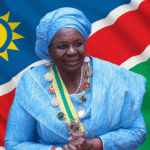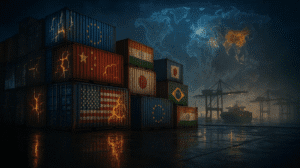The visual evidence is undeniable. Before and after images of glaciers, some taken just a few decades apart, now reveal staggering losses. Ice that once blanketed valleys and clung to peaks has retreated, revealing bare rock, open lakes, and vanishing snowfields. But these images are not just environmental shock art. They are signals of deep, accelerating shifts in the global climate system with consequences that go far beyond aesthetics.
A Measurable, Global Retreat
Images of the Rhône Glacier in Switzerland, for example, now show a yawning gap where solid ice once met a road. Between 2010 and 2020, Swiss glaciers lost about a quarter of their total volume, according to the Swiss Academy of Sciences. Worldwide, glaciers have been shrinking at an alarming rate. A recent study published in Nature found that from 2000 to 2023, glaciers lost an average of 273 gigatonnes of ice annually, a rate nearly 36 percent faster than in the previous two decades.
This is not limited to the Alps. In Peru, the Qori Kalis Glacier has lost nearly half its length since 1963. In China, glacier coverage has declined by over 26 percent since the 1960s, according to government environmental surveys. These changes are not isolated events. They form a global trend with wide-reaching implications.
What Drives the Melting
Glaciers depend on balance. They grow when snowfall exceeds melt and shrink when temperatures rise or snowfall drops. As global temperatures continue to rise, many glaciers have entered what scientists call a state of disequilibrium. This means even if temperatures stop rising now, these glaciers would continue to shrink due to imbalances already set in motion.
The process is self-reinforcing. When ice disappears, darker ground and water absorb more heat, accelerating melt. In mountainous areas, melting also destabilizes slopes, increasing the risk of rockslides and ice collapses. The collapse of a glacier above the village of Blatten in 2025, which caused massive damage, is a stark example of the immediate danger posed by glacial instability.
The Human Cost
The disappearance of glaciers is more than a loss for mountaineers and photographers. It reshapes water systems and raises the stakes for millions. Glacier-fed rivers support agriculture, drinking water, and hydropower for communities across Asia, South America, and parts of Africa. As glaciers shrink, they initially release more water, creating short-term abundance. But that flow diminishes over time, leading to long-term shortages.
Glaciers are also historical archives. Ice cores contain data on past atmospheres, climate patterns, and even volcanic activity. Losing them means losing access to centuries of Earth’s environmental history.
What We Risk and What We Can Do
According to projections by the Intergovernmental Panel on Climate Change, if warming continues unchecked, up to 75 percent of glacier mass could disappear by 2100. Even under optimistic scenarios, losses will be significant.
However, mitigation is not futile. Reducing emissions can slow the pace of retreat and preserve some glaciers, particularly at higher altitudes. Governments must also invest in adaptation: better water management, early warning systems for glacial lake floods, and infrastructure planning in vulnerable mountain regions.
The before and after images may be striking, but the deeper story is what they represent: a world moving out of balance. Whether we regain that balance will depend on how seriously we take the message embedded in melting ice.
A Final Note
The before and after images may be striking, but the deeper story is clear. Glacier loss is no longer a distant warning, it is a present reality with growing consequences. What we choose to do next will determine how much more we stand to lose.















